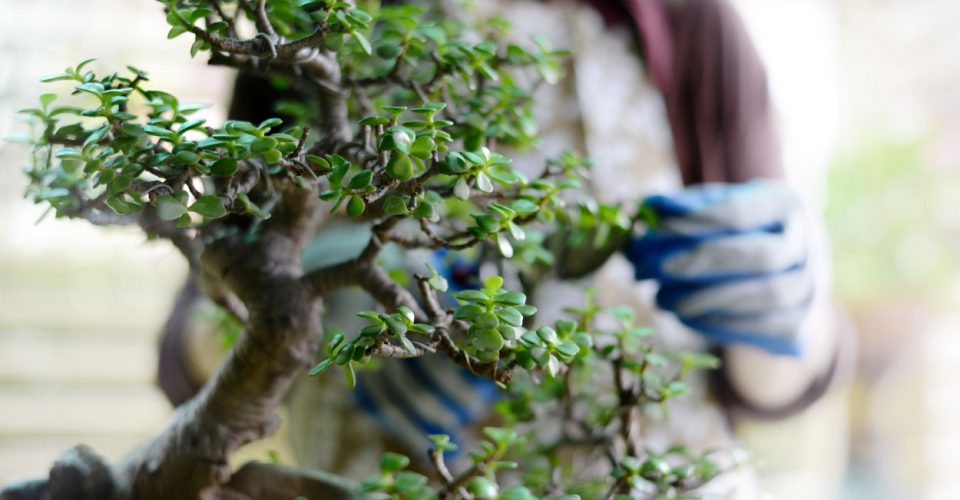How To Grow Your Own Bonsai Tree
Growing a bonsai tree is often the first test of a true gardener. Though it will require care, attention and the right tools, don’t let that put you off. Bonsai trees are rewarding to grow in the home and will garner attention like no other plant you’ve nurtured before. So, let’s get started on growing your own bonsai tree.

Water
To maintain humidity, place the pot in a tray, ideally lined with stones, to catch any drainage from the pot and allow it to evaporate. It is important to ensure that any water is not soaking the soil, however, as this can damage the bonsai by causing its roots to rot.
Water with a watering can or hose attachment that is gentle enough not to wash away the soil, with enough water that the drainage from the pot runs into the humidity tray. The rate of watering will vary based on the plant species as well as the soil quality and rate of evaporation where the bonsai sits.
Between watering the soil should be moist and not allowed to dry out completely, meaning it is best to check the pot regularly rather than water on a set schedule. If the soil does dry out completely, submerge the pot in water until the air has risen from the soil.
Sunlight
Where the bonsai sits will depend largely on climate and the time of year. Many species will suffer under direct sunlight in warm months during the heat of the day, preferring morning and evening light, but will require extra exposure during the colder seasons.
Soil and Feeding
A bonsai must be planted in soil that has good drainage, but retains moisture, and will oxygenate the plant’s roots. While some prefer to mix a custom soil, prepackaged bonsai mixes will also meet the essential requirements.
Fertilise the soil with specialist bonsai feed during the warmer seasons to aid the plant during its growth, as more generic plant foods can damage the roots. If the soil is lacking in adequate nutrition, the leaves of the bonsai will start to yellow.
Pruning
Pruning is where the true art of the bonsai lies. It is recommended to use specialist bonsai scissors to trim both dead branches and new growth once it is an inch in length to maintain the bonsai’s shape. Cut back new growth to the first pair of new leaves. This will encourage new growth in other areas of the plant. If a more aggressive re-shaping is needed, this should be done in early spring, before the main growth period.
Repotting
Repotting a bonsai is a delicate process that should be undertaken in Spring, allowing the plant its annual growth period to recover. A young bonsai may need repotting every two years to prevent it from becoming pot-bound, though with age this frequency decreases. A bonsai is pot-bound when its roots begin to wrap around themselves, having grown beyond the available soil.
Remove the bonsai from its pot and examine the roots. If the roots are wrapping around themselves rather than just the soil it has outgrown the pot. Carefully dislodge the soil from around the roots and trim back the excess. No more than 25% of the roots should be removed. The bonsai can then be repotted either in the same pot or a larger pot to encourage more growth.

